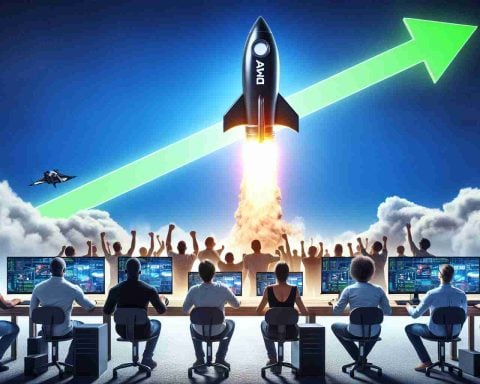The semiconductor sector has recently experienced significant fluctuations, with the VanEck Semiconductor ETF witnessing a dramatic decline of 11.6% in just one day last Friday. Over the past few months, the index has dropped a staggering 26% since mid-August, following a turbulent path that included a sharp fall in July, a brief recovery in early August, and yet another downturn. Despite this recent volatility, the ETF boasts a year-to-date increase of around 27%, indicating resilience amid the challenges.
As investors consider the future of semiconductor stocks, particularly in the wake of the AI boom, insights from Morningstar suggest a positive trajectory for demand. The firm forecasts ongoing improvements in demand dynamics paired with a bounce-back in memory prices and profit margins. Expectations are high for improved orders in personal computers and servers as AI demand escalates. Furthermore, tight supply conditions for memory chips are anticipated to persist into early 2025, primarily due to strategic investments in high-bandwidth memory.
In terms of investment opportunities, Morningstar identifies leading companies such as TSMC and GlobalWafers as key players. TSMC is viewed as a major beneficiary in the AI landscape, maintaining a strong position in both cloud and edge AI sectors. GlobalWafers is noted for its early positioning in the U.S. market, poised to capitalize on rising demand for silicon wafers. As market conditions evolve, both firms—along with others—are seen as undervalued, indicating potential for substantial future gains.
The semiconductor sector’s fluctuations are influenced by various global factors, including geopolitical tensions, supply chain disruptions, and technological advancements. The ongoing US-China trade relations have notably affected semiconductor manufacturers, leading to restrictions on exports and impacting the supply chain. For example, bans on specific technologies can create ripple effects across the industry, particularly for companies reliant on materials and components sourced from these regions.
One critical question facing investors in the semiconductor sector is: What are the long-term trends that will impact semiconductor demand?
Answer: Long-term trends likely to influence demand include the increasing integration of AI technologies in various sectors, the expansion of 5G networks, the growth of the Internet of Things (IoT), and the need for enhanced data processing capabilities in cloud computing. Each of these trends necessitates more advanced semiconductor solutions, driving future demand.
Another important question is: What challenges are semiconductor companies currently facing?
Key challenges include:
1. Supply Chain Vulnerabilities: The semiconductor industry is highly reliant on a complex global supply chain, which can be disrupted by natural disasters, political tensions, or pandemics.
2. Ever-increasing Competition: With new entrants and established companies expanding their capabilities, competition is intensifying, leading to potential price wars.
3. Technological Obsolescence: Rapidly advancing technology makes it crucial for companies to continuously innovate, or risk their products becoming obsolete.
Advantages of investing in the semiconductor sector include:
– Growth Potential: With the rise of AI and new technologies, the semiconductor market is expected to grow substantially.
– Diversity of Applications: Semiconductors are used across various industries, providing a broad base for demand.
– High Margins: Companies that can innovate and deliver advanced products often enjoy high-profit margins.
Disadvantages include:
– High Capital Requirements: Semiconductor manufacturing is costly, requiring substantial upfront investment in technology and infrastructure.
– Market Volatility: As evidenced by recent ETF declines, the sector can experience significant price fluctuations, which can pose risks to investors.
– Geopolitical Risks: As noted, trade tensions and regulations can impact operations and sales.
For further insights and updates on the semiconductor market, you can visit Reuters and Forbes.






















